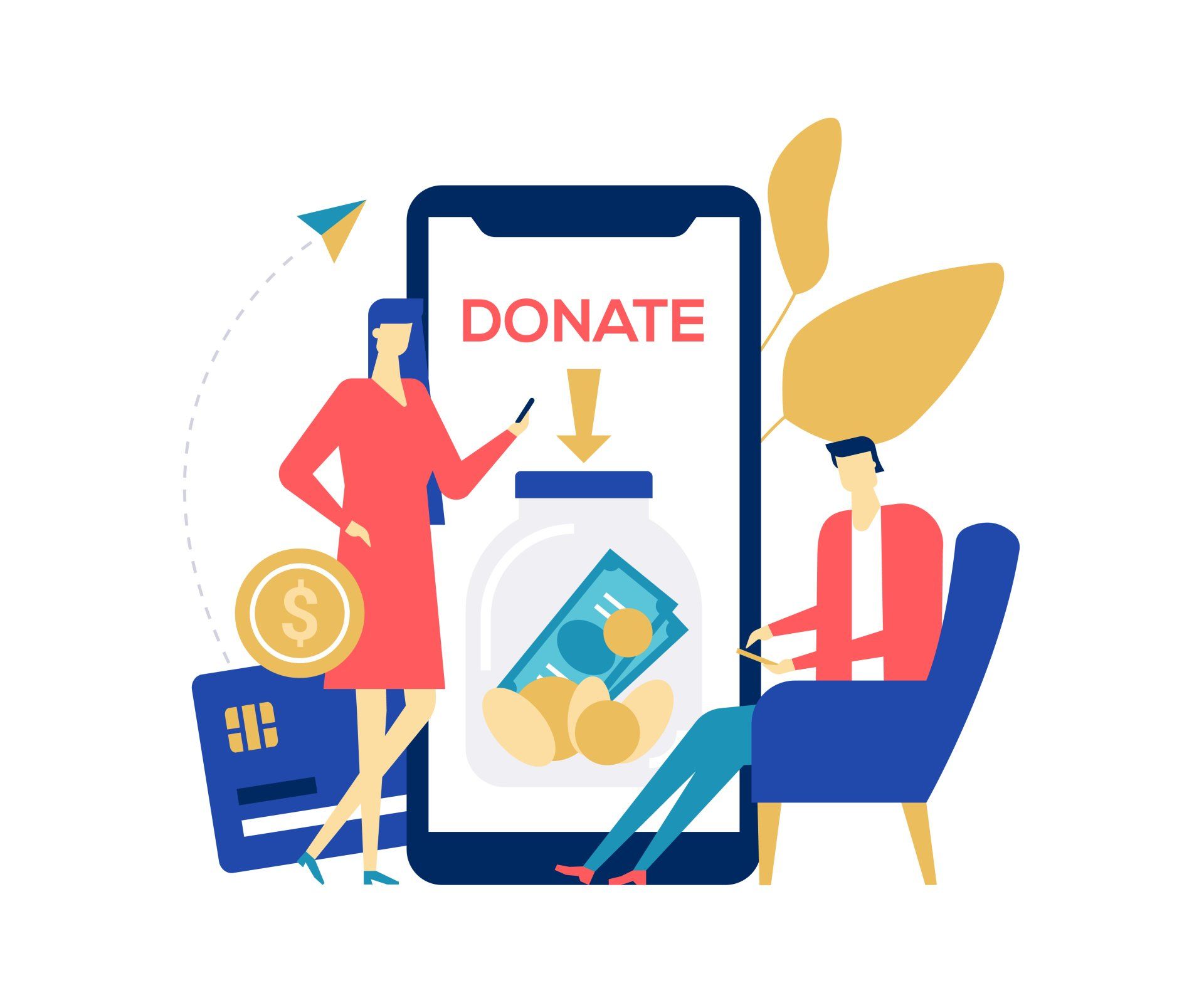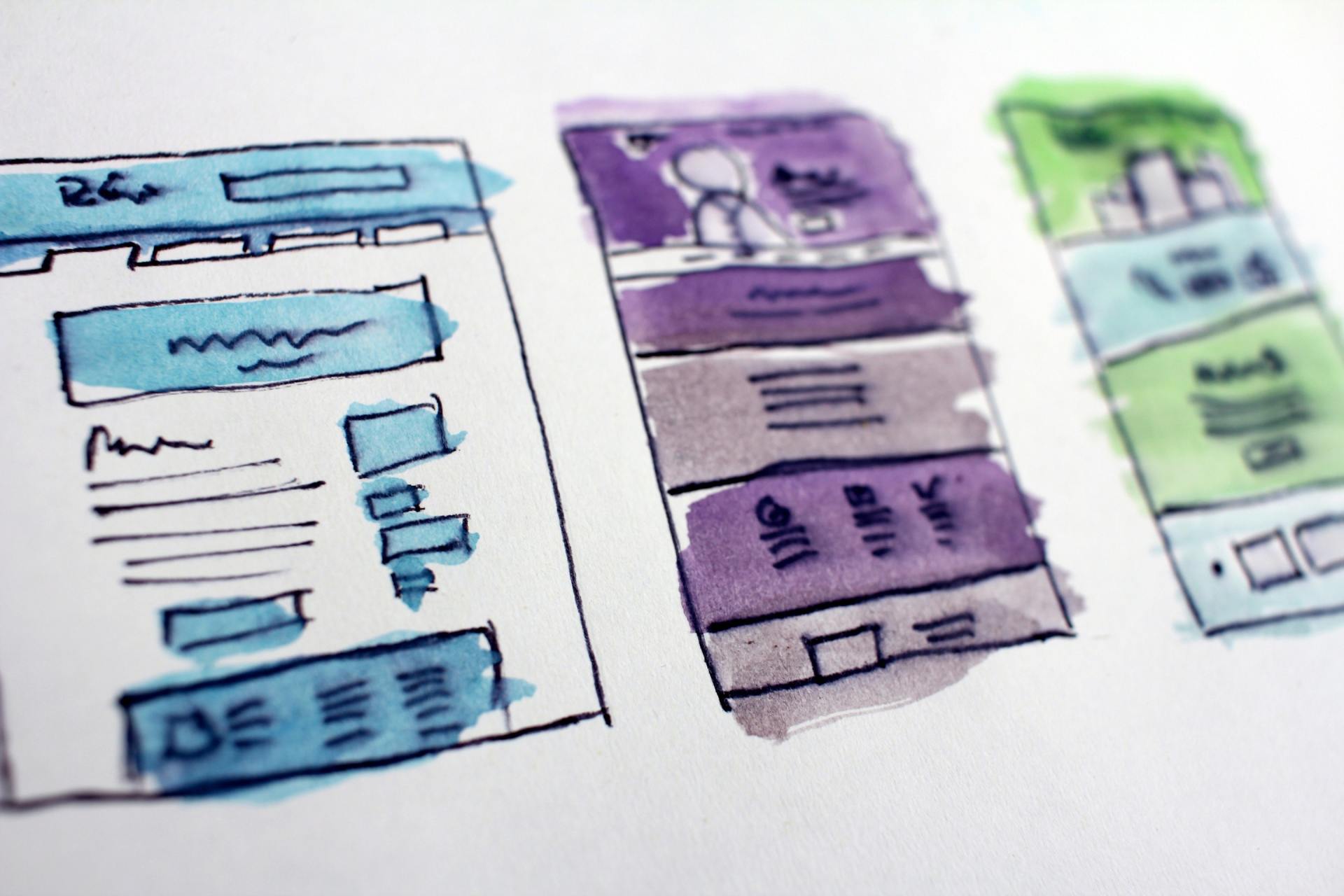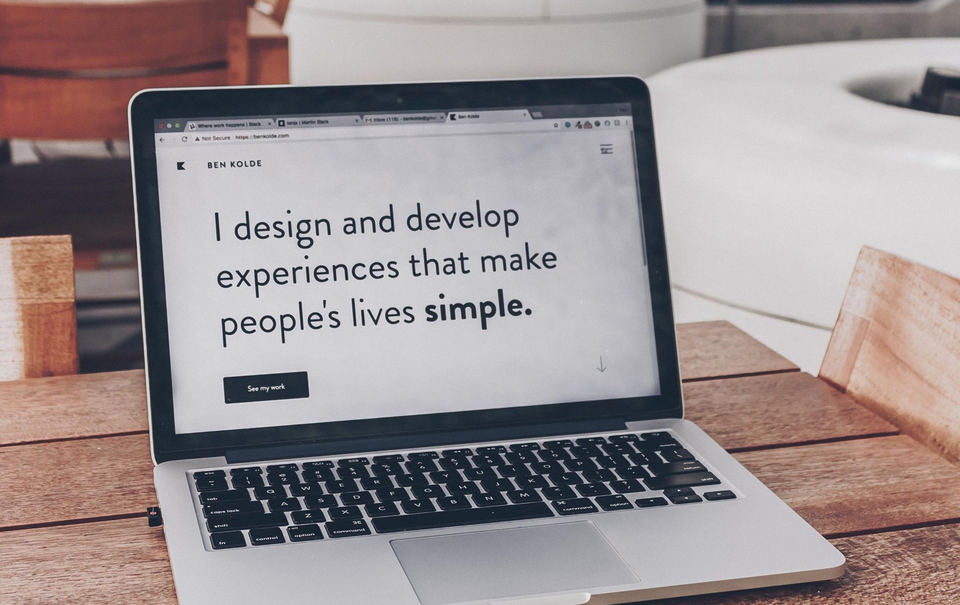Blog Layout
7 Tips For Designing A Great Professional Website
August 11, 2020
Web design
might seem intimidating. Perhaps you feel that it’s in the realm of wizardry and computer genius. Maybe you’ve been more focused on getting the content onto the website than how it really looks or acts. The thing is that some simple web design considerations
can make a really big difference when it comes to your site - and converting visitors into customers. With that in mind, we’ve got seven tips for web design.
1. Make the site easy to use.
The design of the website has to promote the purpose of making the site easy to use. If the site is clunky and it’s not intuitive, people will get frustrated. And when people get frustrated, they leave. They’re not going to put up with it, so the site needs to make sense to someone who’s never been there before. (An example would be if you have an e-Commerce store. You’d better make sure that your shopping cart process is simple, quick, and clear.)
2. Don’t forget site speed.
Your website also needs to be able to load quickly, so your design needs to be pretty streamlined so that the site doesn’t get bogged down. The reality is that people aren’t patient. They want what they want NOW, and that means they won’t sit there tapping their foot and waiting for your site to load. They will bounce and click the “back” arrow. And you don’t want them to click the back arrow and leave. That would be sad.
(One way to help site speed is to make sure you don’t have too many images or graphics. These can really slow the site down. Now, that’s not to say that you have to get rid of images entirely. But be intentional and smart about what visuals you are using and save them for maximum impact.)
3. Use negative space.
You know the white space between different blocks of text or images on a page? Yeah, that’s called negative space. You need to make sure that your site has an appropriate amount of negative space (a.k.a. white space) so that it’s pleasing to look at and not overwhelming. Using white space can help you avoid overcrowding the site and overwhelming people who are looking at it. Plus, you can space out information so that it’s easier for people to read and look at.
4. Remember that mobile is key.
Let’s be real - not many people are browsing the Internet from desktops nowadays. Phones and tablets are taking over the world. So, you need to make sure your website is designed with that in mind. How do you do that? Well, by making sure your site has responsive design. That means that the site is able to adjust to different screen styles and sizes. But in addition to resizing itself to suit the smaller screen, the website still has to be easy for the user to navigate. It still has to make sense. (Remember what we said above - people are not patient.)
5. Include testimonials.
Your website should also include some customer testimonials or reviews. People like to read what other people say about stuff, and the funny thing is that people trust these reviews. So, consider incorporating a space for some shining customer reviews onto your website. Your potential clients might not want to take your word for how great you are … but they might take the word of another customer!
6. Have landing pages.
A landing page is basically a web page that’s specifically about one product or offer. Imagine that you’re a potential customer and you click on something you’re interested in … and it takes you to a simple, quick, and easy-to-read page that’s all about what you’re looking for. Perfect! Yeah, so that’s what a landing page is. It provides the need-to-know about the product or offer the potential customer is looking for. But remember that you don’t want to clutter your landing page. It should have a simple, clear call to action and not be overwhelming.
7. Don’t be afraid to do your own thing.
Sometimes following the latest, greatest trends in web design is helpful, but other times it’s not. For example, stock photos used to be THE thing. Like the be all, end all. But that didn’t mean they were all that great or that they were the best thing for web design. Sometimes you have to be creative and break away from the “trends” that aren’t going to help you in the long run.
—
So, those are a few things to keep in mind when it comes to web design. You want your site to look clean and not too crowded. It should be easy to use and it should be responsive when it comes to mobile. And we get that designing a website might feel like a really overwhelming task, but that’s where SiteNow can help. We’d be happy to help you get the website you’ve always wanted.
Looking for help with your website?
Your website is the most important "employee" in your company. It works the hardest and longest than any other person in your company. It is your forever employee of the month. So why not treat it well? SiteNow can help you create an incredible website that not only looks good, but converts. DIY website building just got easier.

September 17, 2020
Small businesses don’t require the same marketing strategies as major corporations nor can they afford to. It’s not like everyone can pay for a giant ad on a skyscraper in Times Square. Don’t tell the companies that buy those expensive giant ads, but there are cheaper, more effective ways to market to your target audience. Down below are only thirty out of many low-budget marketing ideas.

July 27, 2020
Once a business or a brand is off the ground, it’s time to get the word out through effective marketing. However, a marketing strategy will not be effective unless you are aware of your target market. Chances are you know what a target market, also known as a target audience , is but just in case let’s define it. A target market/target audience is the specific group of people your product or service is aimed for. It’s who your marketing strategy is targeting. A target market can feel very broad at first. This is why it’s important to define and streamline it. An effective marketing strategy can’t be aimed for every human on the planet. It’s perfectly fine if you have no idea who your ideal customer is. This is why we have made six easy steps for defining your target market.

July 20, 2020
The recent pandemic has caused the classroom to look a lot different than what teachers (and students) are used to. Rather than seeing the (hopefully) smiling faces of their students in person every day, teachers have had to adapt to using online platforms, which means trying to teach through a computer screen . Teaching is a challenging enough profession as it is, and one that deserves a lot of respect. A lot! If you’re trying to make distance learning work for you and your students, here are a few tips to help .

July 6, 2020
These past few months have been very difficult for everyone. With the struggles that the world is facing, it leaves many business owners wondering how they can give back or make a difference towards the causes that they’re passionate about. (For example, maybe you want to raise money for COVID-19 relief or research. Or perhaps you want to raise funds for Black Lives Matter or natural disaster relief.) Wherever your passion and your heart are, you can use your website as a way to raise money to give back to the causes that matter. You can do that by personalizing your site. Here are a few tips. 6 tips to use your website to give back using personalization. Did you know that you can use personalization on your website to make giving back easy? Wait, let’s back up for a second - what’s personalization? For our purposes, personalization is creating a “trigger” on your site that tells it to display a certain thing or take a certain action. It’s kind of a cause and effect thing. For example, a trigger could be one of the following: The time of the day Number of visits to your website Location Type of device (desktop vs. mobile) URL (like from an ad campaign) The date When the trigger happens, the site will take the action that you’ve told it too. (Websites can be pretty smart, huh?) Okay, so, that being said - here’s how you can use your website personalization to give back.

June 29, 2020
For most people, they have a clear mental and physical separation between work and home life. For those that work from home, it can be difficult to find balance when an office becomes a home. There are chores, conference calls, children screaming, reports to write, and the temptation of Netflix that are no longer separated by a physical barrier. The first couple of weeks adjusting our tough but using these tips will make balancing between professional and personal life easier.

June 19, 2020
When COVID – 19 first came into the U.S and shelter in places took effect to limit the spreading of the disease, no one thought we’d be in quarantine for months. Businesses assumed they’d close for a week or two before reopening. As time goes on, it becomes clear this is not a matter of waiting, it's a matter of adapting for businesses to survive. It’s hard to keep up to date these days as information about the disease and the status of reopening of individual states changing within a couple of hours. Businesses need to be able to communicate changes in their business to customers as soon as possible while being consistent on all of their platforms. SiteNow helps our client’s consumers by providing the critical information they need . We provide a portal that is easy to use allowing digital marketing agencies to review and update their listing information in a matter of seconds. Down below are several changes we recommended businesses update during this time.

May 27, 2020
If you’ve got a website and you’re trying to make it SEO-friendly, you probably already know who you’re trying to please. Starts with a “G”, ends with an “-oogle”... There’s good reason for that. Google is the big kid on the block when it comes to search engines, naturally. When managing a website, if you’re doing well on Google, you’re doing well. Period. But the thing is that Google likes to keep us on our toes. They frequently release updates to their super-secret algorithm, so how can you make sure you’re ready to weather the next one? Here are 7 tips.

May 21, 2020
First and foremost, CTA stands for call to action. It is an image or text that entices visitors, leads, and customers to take action. While the most commonly seen CTA is “click here” it does not work in all situations nor should it. Every audience/group visiting a site will want to interact with a site in different ways. No matter how they are interacting with the site, it’s crucial to get visitors to become leads, which will become customers. Ideally, the customers will enjoy the products/services enough to become promoters and free advertisers for the business. A way to ensure this happens is by tailoring for all of the various types of audiences/groups through the integration of different types of CTAs throughout the site.

May 13, 2020
Website Personalization is the act of creating customized tailored experiences for visitors based on their reason for visiting a website. According to OneSpot “87% of customers say that personally relevant branded content positively shapes their opinion of a brand.” Think of the website like an in-person store, not every customer walks in wanting the same thing therefore they won’t want the same sales pitch. They want to feel special. Through website personalization visitors of the site immediately feel the brand is a right fit for them. While website personalization sounds like a dauntingly difficult task, it’s now easier than ever thanks to data collection and analytics.

May 5, 2020
Your business’s website is a key part of your marketing strategy, but nowadays a website doesn’t just live on a desktop computer. People are on the go, using their phones to run searches or grabbing a tablet instead of sitting at a desk. And that means your website needs to be responsive . What’s a responsive website and why does it matter? We’ll explain.



